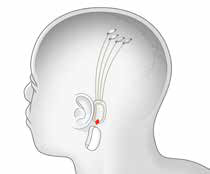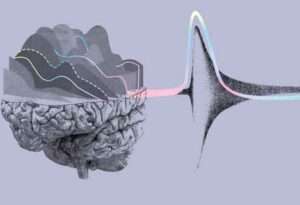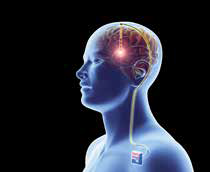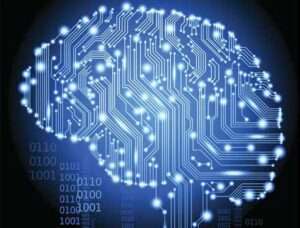Neuralink: Bridging the Gap Between Brain and Technology

In the realm of innovation, entrepreneur Elon Musk stands as a beacon, continually pushing the boundaries of human ingenuity. One of his most captivating and ambitious endeavours, Neuralink, stands at the forefront of technological advancements, poised to revolutionise the very essence of human existence by seamlessly merging the power of artificial intelligence (AI) with the intricate complexities of the human brain. The groundbreaking development of Neuralink comes with profound implications of the transformative potential it holds for various facets of human life.
Neuralink, a brainchild of Elon Musk’s, emerged in 2016 as a neurotechnology company dedicated to unleashing the untapped potential of the human brain through the development of sophisticated brain-computer interfaces (BCIs). BCIs, akin to bridges between the mind and external devices, possess the remarkable ability to decipher the intricate language of brain signals translating them into commands that can control computers, prosthetics, or other external devices. Neuralink is in the unwavering pursuit of engineering a BCI that not only guarantees safety and efficiency but also embraces user-friendliness, opening doors to restoring lost function in individuals with disabilities while simultaneously amplifying other capabilities.
This groundbreaking initiative harnesses the power of cutting-edge technology to establish a direct conduit between the human brain and the digital realm. The Neuralink device is a precisely crafted network of ultra-thin electrodes, delicately implanted into the sophisticated tapestry of the brain tissue. These microscopic marvels seamlessly interface with an external wearable computer chip, forming a synergistic partnership. This ensemble possesses the extraordinary ability to both stimulate and record neural activity, enabling a bidirectional exchange of information between the brain and the computer, blurring the lines between the biological and the digital.
The realm of possibilities for Neuralink’s BCI extends far and wide, holding the promise of transformative advancements in various facets of human life.
A recent experiment by Neuralink has demonstrated the ability to decode neural signals from a monkey’s brain and translate them into actions controlled by thought. In this groundbreaking study, a macaque named Pager was equipped with a Neuralink implant, a tiny device with 1,024 electrodes which was embedded in the motor cortex of his brain. These electrodes continuously monitored the neural activity of neurons involved in hand and arm movement. This neural data was then wirelessly transmitted to a computer, where it was decoded and translated into commands that controlled the cursor in the classic video game called Pong.
Pager’s impressive performance in the game, demonstrated through his skilful manoeuvring of the paddle using his mind, highlights the potential of Neuralink’s technology to revolutionise how people interact with the world around them. It holds the promise of restoring mobility to individuals with paralysis, aiding those with Parkinson’s disease manage their tremors, and even enabling new forms of communication and entertainment.
Neuralink’s BCI holds immense promise for individuals grappling with neurological impairments, offering a glimmer of hope for those shrouded in darkness, confined by paralysis, or battling the relentless onslaught of seizures. For those who have lost their sight, Neuralink’s technology could restore the gift of vision, enabling them to perceive the world. For those confined by paralysis, Neuralink’s BCI could restore movement, empowering them to reclaim control over their bodies. And for those battling constant fear of seizures, Neuralink’s device could serve as a calming force, mitigating the frequency and severity of these debilitating episodes. Heralding a new era in medical advancements, Neuralink’s BCI has the potential to revolutionise the treatment of a wide spectrum of neurological disorders and injuries. For individuals paralyzed by spinal cord injuries, Neuralink’s technology could restore lost mobility, enabling them to regain independence. For those battling neurodegenerative diseases, Neuralink could slow or even halt their progression, preserving their cognitive and physical abilities. Neuralink’s impact on the medical field is poised to be profound and far-reaching, offering a beacon of hope for those struggling with neurological impairments and paving the way for a future where these challenges are no longer insurmountable hurdles but rather surmountable obstacles on the path to recovery and renewed vitality.
Neuralink’s BCI extends its reach beyond merely restoring lost functions, venturing into the realm of enhancing human capabilities. By harnessing the power of mere thoughts, individuals could seamlessly command computers, effortlessly absorb new knowledge and skills, and effortlessly control external devices. This unprecedented level of human-machine interaction could revolutionise education, enabling students to grasp complex concepts with unparalleled efficiency, and transform work environments, empowering professionals to manage tasks with newfound clarity and focus. Neuralink’s potential to amplify human capabilities is truly limitless, blurring the lines between human and machine, fostering a new level of interaction that could reshape various industries, from healthcare to manufacturing, paving the way for a future where humans and machines work in perfect harmony.
Neuralink’s BCI could revolutionise the treatment of mental health disorders, offering potential treatments for depression, anxiety, and other mental illnesses. By directly interacting with the neural pathways associated with these conditions, Neuralink’s technology could provide targeted interventions, alleviating symptoms and restoring emotional well-being. Neuralink’s potential to transform mental healthcare is a testament to its potential profound impact on human well-being.
Neuralink’s BCI could transform gaming into an entirely mind-controlled experience, or what’s more colloquially referred to as deep-dive capable gaming interface, allowing players to interact with virtual worlds and characters using their thoughts alone. This would not only revolutionise gaming but also provide an unprecedented level of immersion and engagement. In addition to gaming, Neuralink could also transform entertainment experiences in other areas. For instance, imagine enhancing musical performances by enabling musicians to directly control instruments or sound effects using their thoughts. This would open up new doors for creative expression and audience engagement. Similarly, Neuralink could enhance movie viewing by allowing viewers to manipulate the plot or narrative using their thoughts, creating a more personalised and interactive cinematic experience.
Neuralink’s BCI could provide invaluable insights into the intricate workings of the human brain, unlocking the secrets of consciousness, memory, and neuroplasticity. By studying the electrical signals that govern our thoughts and emotions, Neuralink could illuminate the mechanisms underlying mental health disorders, paving the way for groundbreaking treatments. Neuralink’s contribution to our understanding of the brain could be truly groundbreaking.
While the company has made significant progress in developing its technology, it still needs to overcome significant technical, ethical, and regulatory hurdles before its products can be widely adopted.
One of the primary technical challenges is the intricate nature of the human brain. The brain is a complex organ with billions of neurons, each making countless connections. Understanding and deciphering these neural signals and pathways is a formidable task, and Neuralink’s technology needs to be refined to consistently and accurately interpret brain activity.
Furthermore, Neuralink faces ethical concerns regarding the potential for data privacy breaches and the manipulation of human consciousness. The ability to read and write thoughts and memories raises profound ethical questions about privacy, autonomy, and the potential for misuse of this technology. Neuralink must establish robust safeguards to protect sensitive brain data and ensure that its technology is used for ethical purposes.
Regulatory hurdles also present a significant challenge. Neuralink’s products fall under the purview of medical device regulations, requiring rigorous testing and approval from regulatory bodies such as the FDA. Obtaining regulatory clearances is a lengthy and complex process, and Neuralink needs to demonstrate the safety and efficacy of its devices to gain approval.
In addition to these challenges, Neuralink also faces competition from other BCI companies, each with their own unique approaches and technologies. The race for BCI dominance is heating up, and Neuralink needs to maintain its technological edge and establish itself as a leader in this field.
The company estimates that each implant surgery will run about $10,500, including exams, parts and labour, and that it will charge insurers about $40,000 which is significantly higher than the cost of the surgery itself. This suggests that Neuralink believes that its technology is valuable enough to insurers to justify the high price tag. Neuralink’s forecast for annual revenue is based on its plans to perform a certain number of surgeries each year. The company plans to perform 11 surgeries in 2024, 27 surgeries in 2025, and 79 surgeries in 2026. On a recent note, Elon Musk’s audacious dream of directly linking human brains to devices like phones took a leap forward with the first-ever implant of a Neuralink device in a human recipient. The undisclosed individual “is well on the road to recovery,” Musk revealed on the social media platform X. “Early signs are encouraging, showing positive detection of neural activity,” he added, referring to the communication between brain cells. This milestone comes after Neuralink initiated recruitment for its human trial earlier this year. Following FDA approval in May 2023, the company sought participants aged 22 and above with quadriplegia caused by spinal cord injuries or ALS, a progressive neurodegenerative disease that weakens muscles.
It is also important to note that Neuralink is still a young company and that its plans are based on estimates and forecasts. It is possible that the company will not be able to achieve its goals, and investors should be aware of the risks involved in investing in Neuralink.
As mentioned before, Neuralink is not the only company working on brain-computer interfaces (BCIs). There are a number of other companies that are developing BCIs for a variety of applications. Some of Neuralink’s most notable competitors include:
Paradromics: Paradromics is a company that is developing a high-volume bidirectional data streaming BCI. This BCI would allow for a more natural and intuitive interaction between the brain and computers.
Synchron: Synchron is a company that is developing a minimally invasive BCI. This BCI would be implanted in the blood vessels of the brain, rather than directly into the brain tissue. This would make the procedure less risky and more comfortable for patients.
Kernel: Kernel is a company that is developing a BCI that uses machine learning to decode brain signals. This approach could allow for more accurate and reliable decoding of brain signals.
Blackrock Neurotech: Blackrock Neurotech is a company that has developed a BCI that is already being used to help people with paralysis control robotic limbs.
BrainGate: BrainGate is a company that has developed a BCI that is being used to help people with epilepsy control their seizures
Neuralink is still in the early stages of development, but the company has made significant progress in recent years. The company has developed a number of new technologies, including a device that can be implanted in the brain with high precision. The company has also conducted a number of successful experiments with animals. The future of Neuralink is bright. The company has the potential to revolutionise the way we interact with the world around us.
Elon Musk’s Neuralink device stands as a pivotal advancement in the convergence of AI and the human brain. Its potential to revolutionise medical treatments, enhance cognitive abilities, and redefine brain-computer interfaces presents both immense promise and formidable challenges. As Musk and his team venture further into the uncharted territories of scientific innovation, it is crucial to address the ethical considerations that accompany this groundbreaking technology. If successful, Neuralink holds the transformative power to reshape human existence and unlock the enigmas of our most intricate organ: the human brain.







